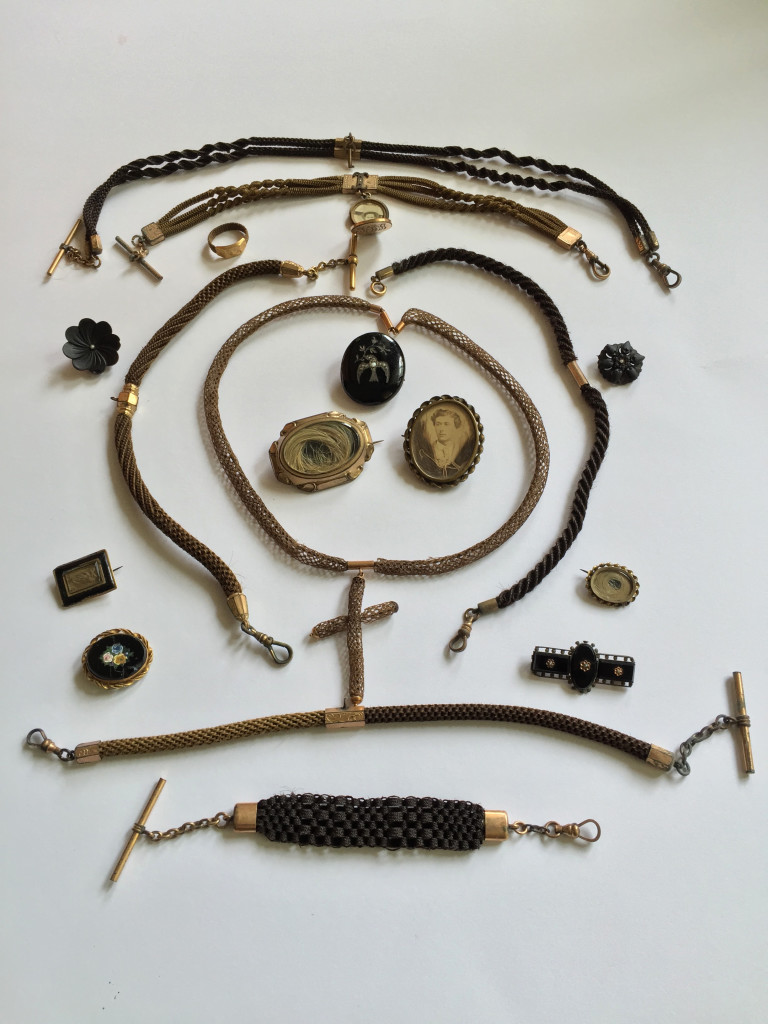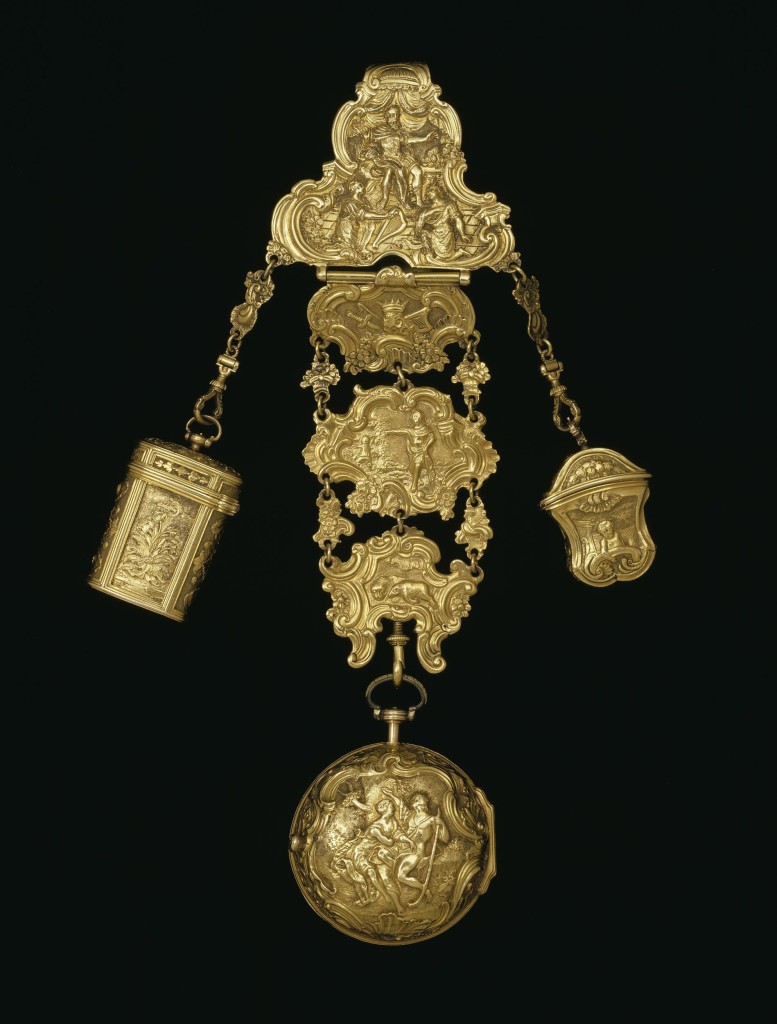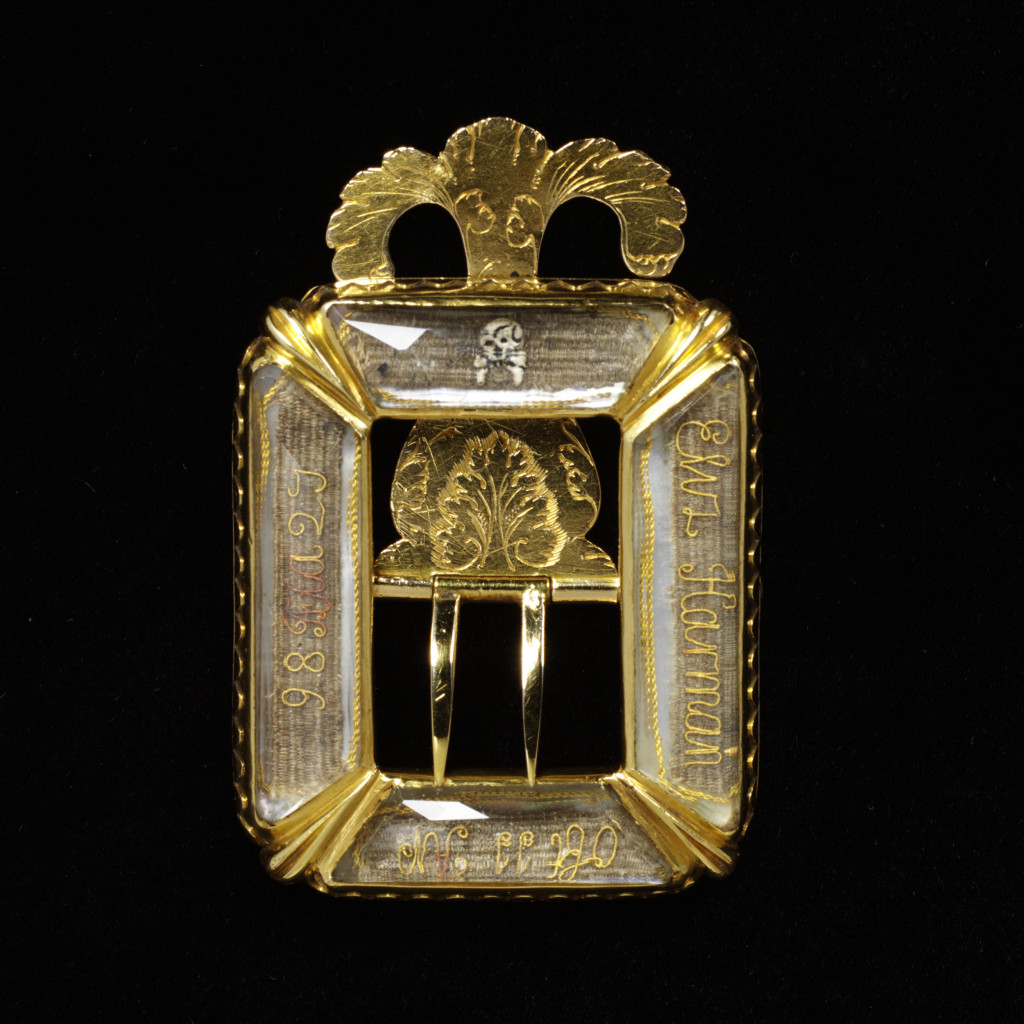Miniature Eye Tie Pin
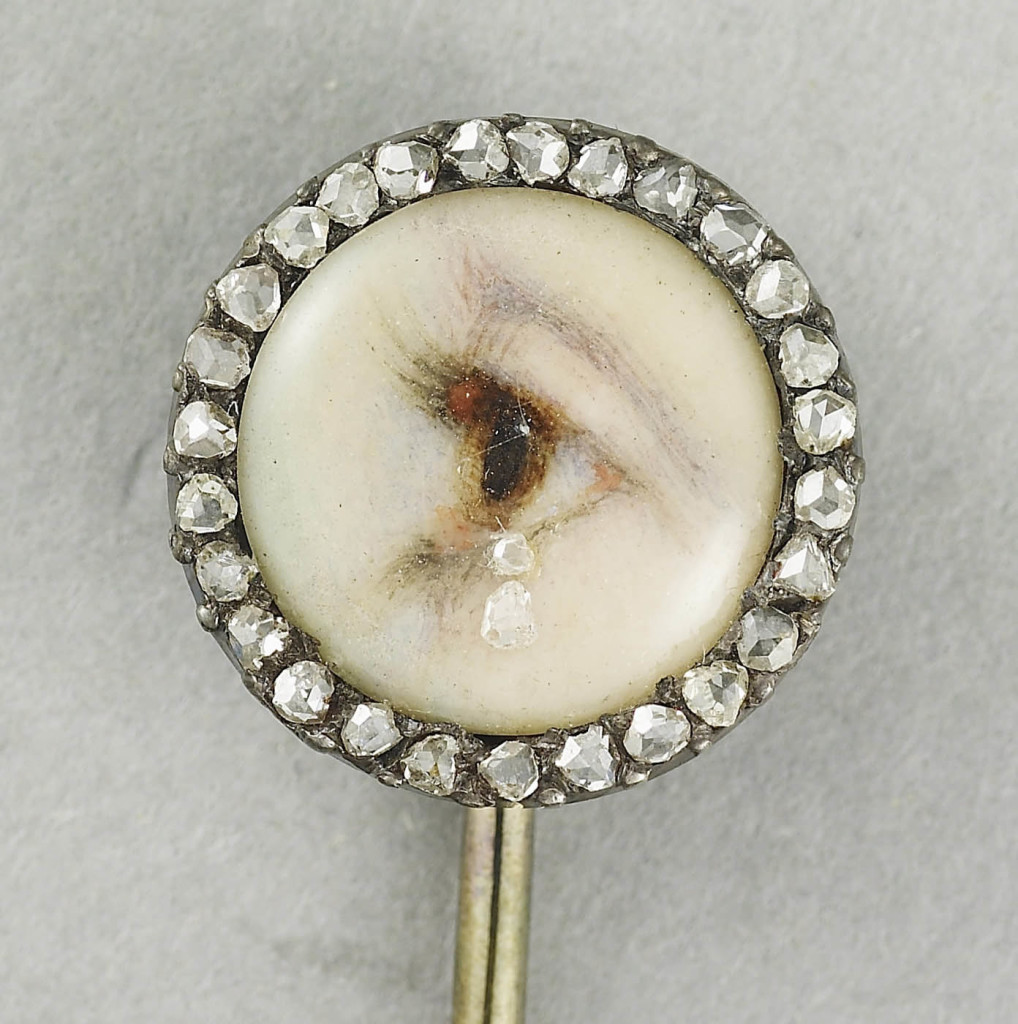
Reverence for history and a passion to relive it are facets to the fascination of a collector. Because we love history and its unusual elements in jewels, keeping styles alive after they have passed from fashion is not something unique to modern collecting
The early 20th century had a Romantic revival that brought back many of the styles of the late 18th and early 19th centuries. Elements were emulated and jewels are often difficult to discern between what is a revival piece and what is original. Miniature portraits came back into fashion, the heavy acanthus and floral Rococo designs inspired the borders of lockets and pendants and classical symbolism was used in allegorical scenes. The weight of these jewels tend to be lighter in gold (often rolled gold) and the subjects are clearly modern in paintings.
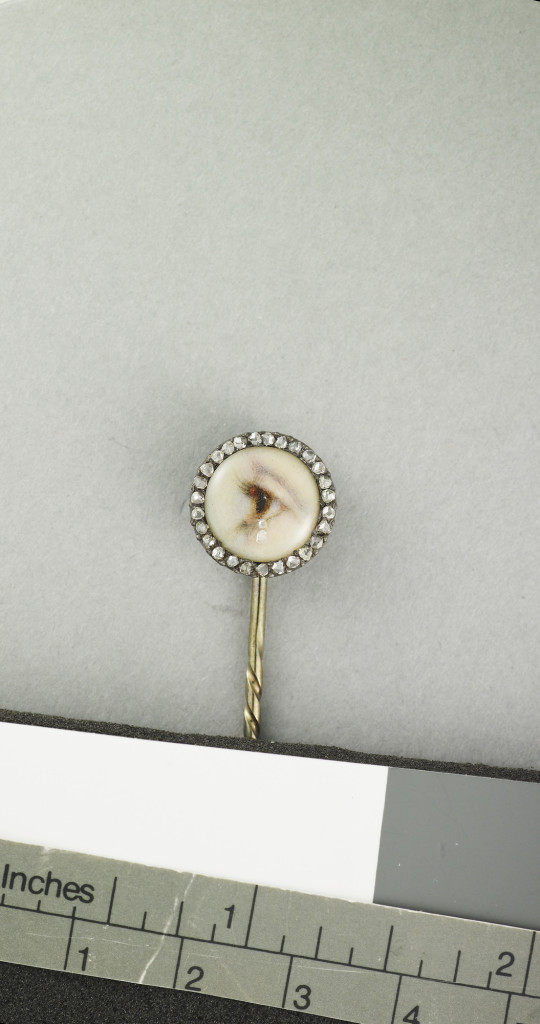
Some unusual styles have always taken fascination due to their sentimentality and oddity. The “lover’s eye” or ‘Georgian eye” is one such curiosity. Eye portraits are considered to have their genesis in the late 18th Century when the Prince of Wales (to become George IV) wanted to exchange a token of love with the Catholic widow (of Edward Weld who died 3 months into the marriage) Maria Fitzherbert. The court denounced the romance as unacceptable, though a court miniaturist developed the idea of painting the eye and the surrounding facial region as a way of keeping anonymity. The pair were married on December 15, 1785, but this was considered invalid by the Royal Marriages Act because it had not been approved by George III. Fitzherbert’s Catholic persuasion would have tainted any chance of approval. Maria’s eye portrait was worn by George under his lapel in a locket as a memento of her love. This was the catalyst that began the popularity of lover’s eyes. From its inception, the very nature of wearing the eye is a personal one and a statement of love by the wearer. Not having marks of identification, the wearer and the piece are intrinsically linked, rather than a jewellery item which can exist without the necessity of the wearer. Use of materials developed along with the size of the settings of eye miniatures, as pieces were surrounded by precious stones and became larger due to altering fashion. A good reference for the evolving trend of the shape of early 19th century jewellery can be seen in the Rings section, where settings and the shape of the mementos changed quite dramatically from 1790-1830.

This eye portrait, featuring a diamond-mounted tie pin features a female’s left eye with brown iris shedding two diamond tears is an excellent example of a revival jewel. First recorded in the Royal Collection during the reign of King Edward VIII, Dr Hanneke Grootenboer has confirmed the jewel to be from the early 20th century. Without an expert’s eye, it would be easy to suggest that this was from the turn of the 19th century, due to its precise design and construction.
It is not so much a forgery as it is a homage to an earlier age. A forgery is a creation used to fool a viewer intentionally, whereas respecting the values and style of an early age is a way to maintain them for the future.




